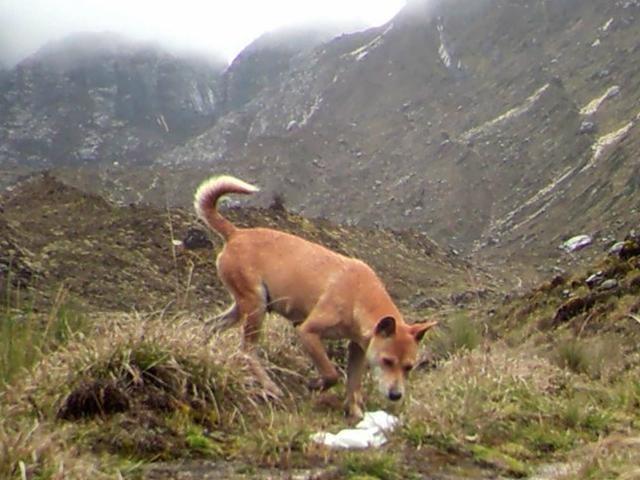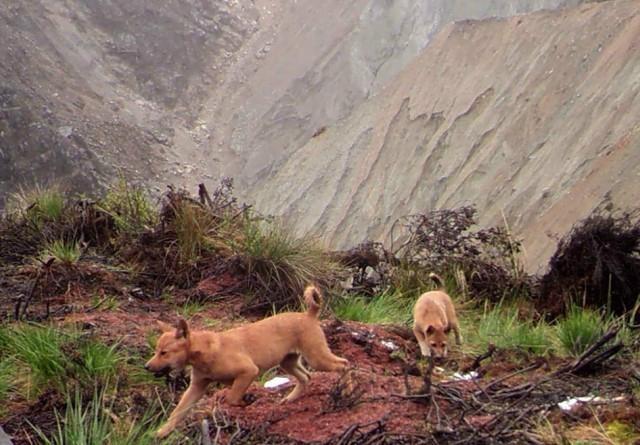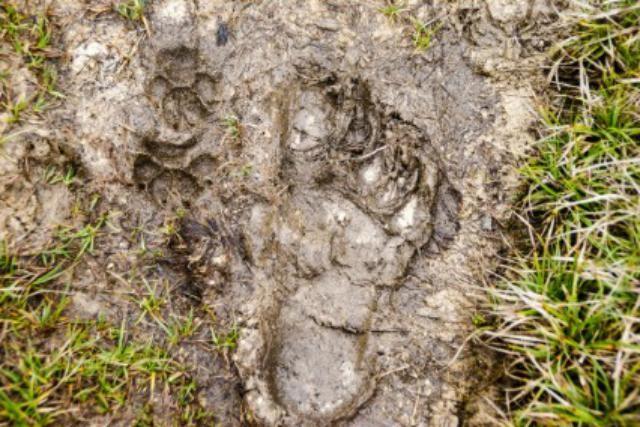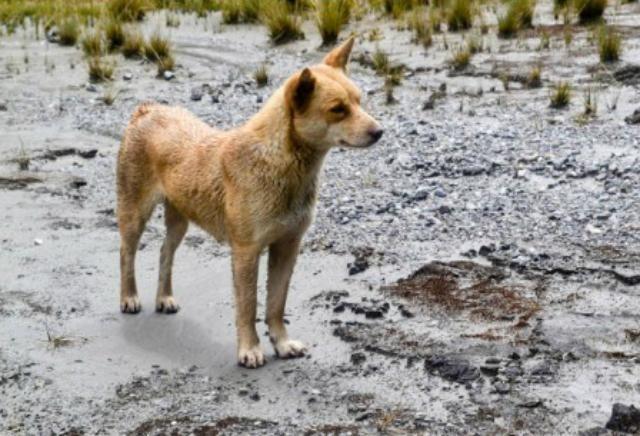World's rarest, most ancient dog breed rediscovered alive
For decades, scientists thought the New Guinea highland wild dog, touted the world's rarest and most ancient dog breed in the world, was extinct.
After an expedition to one of the planet’s most inhospitable and isolated regions, however, researchers have come back with evidence that the handsome creatures are nowhere near dead.
“The discovery and confirmation of the highland wild dog for the first time in over half a century is not only exciting, but an incredible opportunity for science,” stated the New Guinea Highland Wild Dog Foundation (NGHWDF), the group responsible for the animal’s rediscovery. “The 2016 Expedition was able to locate, observe, gather documentation and biological samples, and confirm through DNA testing that at least some specimens still exist and thrive in the highlands of New Guinea.”
The researchers took over 100 photographs of around 15 dogs – including adults and pups – which they chanced upon far from human civilization, in the central mountain spine of New Guinea. The DNA Analysis also proves these creatures are the most primitive and ancient canids known to man.


The first live specimen of the New Guinea highland wild dog was obtained in 1897 by Charles Walter De Vis. More dogs would be collected in 1956 and 1976; these latter batches would go on to serve as the foundation stock of the species’ domesticated variant, the New Guinea singing dog. In the decades since, however, researchers had failed to observe the New Guinea highland wild dogs in their native habitat, leading experts to believe the species had died off. And although two photographs were taken of the dogs in 2005 and 2012, said photographs were unconfirmed.
In 2016, the NGHWDF launched an expedition, helmed by zoologist James K. McIntyre, to western New Guinea’s Papua province. Here they met University of Papua researchers, who were also looking for the dogs.
It was in September of the same year that they found a muddy paw print – recent evidence that a dog-like creature was roaming the New Guinea highlands’ thick forests between 11,351 and 14,435 feet above sea level.

The find urged them to deploy trail cameras throughout the sector, enabling them to observe bait sites all day and night. In the brief span of two days, their efforts resulted in over 140 images of the species, captured on Mount Carstensz’s highest summit and the world’s tallest island peak, Puncak Jaya.
The researchers were even able to monitor and document the creatures first-hand, and gather fecal samples for DNA analysis. With this data at hand, they confirmed that the dogs they had discovered were related to the New Guinea singing dog and the Australian dingo.
Studying the New Guinea highland wild dog will help scientists not only understand how exactly the highland wild dog, singing dog, and dingo are related, but also provide them with exciting insights into the evolution of canids.
“The fossil record indicates the species established itself on the island at least 6,000 years ago, believed to have arrived with human migrants,” explained the NGHWDF. “However, new evidence suggests they may have migrated independently of humans.”
They added: “While the taxonomy and phylogenetic relationships with related breeds and Australian dingoes is currently controversial and under review for both New Guinea singing dogs and highland wild dogs, the scientific and historical importance of the highland wild dog remains critical to understanding canid evolution, canid and human co-evolution and migrations, and human ecology and settlement derived from the study of canids and canid evolution.”

In a press release, the NGHWDF also stated: “The HWD is likely the best living canid example available to scientists outside the fossil record, predating human agriculture and representing a critical ‘missing link’ species having evolved little – and more importantly, free from selective breeding influences imposed by humans - since the time before the dawn of agriculture. It is also the largest and only apex predator on the whole of New Guinea. Further study is not only key to gauging the health and fitness of the ecosystem these dogs inhabit, but vital to understanding canid and human genetics, co-migration and co-evolution. To unlock the secrets of the Highland Wild Dog is to better understand ourselves and our own story.”
The New Guinea highland wild dogs are described as having golden, black, tan, or cream coats, with tails curled like fish hooks over their posteriors, not unlike a Shiba Inu’s. Their ears are triangular and erect.
The researchers have yet to confirm if the dogs are capable of producing the same distinctive high-pitched howls which their descendants, the New Guinea singing dogs, are known for.
The researchers will continue studying the dogs, which they believe have a good chance of surviving. — All photos from nhgwdf.org/TJD, GMA News




